Introduction to the Giant’s Causeway
The Giant’s Causeway stands as one of Northern Ireland’s most iconic landmarks, drawing visitors from across the world to marvel at its natural beauty and rich heritage. This extraordinary site, located on the rugged north coast of Ireland, is famed for its striking landscape of around 40,000 interlocking basalt columns, which create a dramatic path stretching out to sea. The Giant’s Causeway is not only a geological wonder but also a place steeped in myth and legend, with tales of giants and ancient battles woven into its history. For those seeking to explore the area, the Bushmills Railway offers a unique heritage railway journey along the coast, connecting the historic village of Bushmills to the heart of the Causeway. Whether you’re walking the scenic paths, taking in the breathtaking views of the coast, or enjoying a nostalgic ride on the railway, the Giant’s Causeway promises an unforgettable journey through time and nature.
Geology and Legend of the Giant’s Causeway
Recognized as a UNESCO World Heritage Site, the Giant’s Causeway is celebrated for its remarkable geological formations. The iconic basalt columns, which vary in height and shape, were formed millions of years ago when volcanic lava cooled rapidly, contracting and fracturing into the distinctive hexagonal patterns seen today. This natural phenomenon has created a landscape that is both scientifically fascinating and visually stunning, attracting geologists and nature lovers from around the globe. The area is also rich in wildlife, with unique flora and fauna thriving among the rocks and along the coastline.
Beyond its geological significance, the Giant’s Causeway is enveloped in local legend. According to folklore, the causeway was built by the giant Finn McCool, who constructed the path across the sea to Scotland to challenge a rival giant. This captivating story adds a magical dimension to the site, and visitors can learn more about the mythology and history at the Visitor Centre. The legacy of innovation in the area is also reflected in the former Giant’s Causeway Tramway, a pioneering 3 ft (914 mm) narrow gauge electric railway that once connected Portrush to the Causeway. Today, the spirit of this historic tramway lives on through the Bushmills Railway, continuing to link Bushmills and the causeway for new generations of explorers.
History of the Giants causeway and bushmills railway
The Giants Causeway and Bushmills Railway is a testament to Northern Ireland’s rich history and technological advancements. The tramway’s roots trace back to 1883 when it was established as the world’s first long electric tramway. The Bush Valley Railway, hailed as the first long electric tramway powered by hydroelectricity, connected Portrush, Bushmills, and the Giant’s Causeway. This marvel was the brainchild of Colonel William Traill of Ballyclough, who, inspired by the Siemens Company’s electric railway system showcased at the Berlin Trade Fair in 1879, envisioned this tramway.
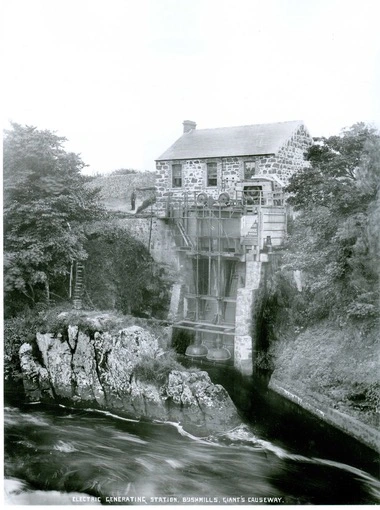
The original Giant’s Causeway Tramway, operated by a pioneering tramway company, was initially powered by hydroelectricity, with water turbines producing the necessary electrical power. The Walkmill Falls generating station was built for this purpose. The tramway was hailed at its opening as a world-first in electric tramways. Despite challenges, including opposition from Sir Macnaghten of Dundarave, the tramway was inaugurated in 1883 as the first commercially operated “hydroelectric” powered tram system globally. It operated for 65 years before the line was closed at the end of the 1949 season. The former Giant’s Causeway tramway route was later revived as the Causeway Bushmills Railway, a heritage railway that allows visitors to experience a scenic journey along this historic line.
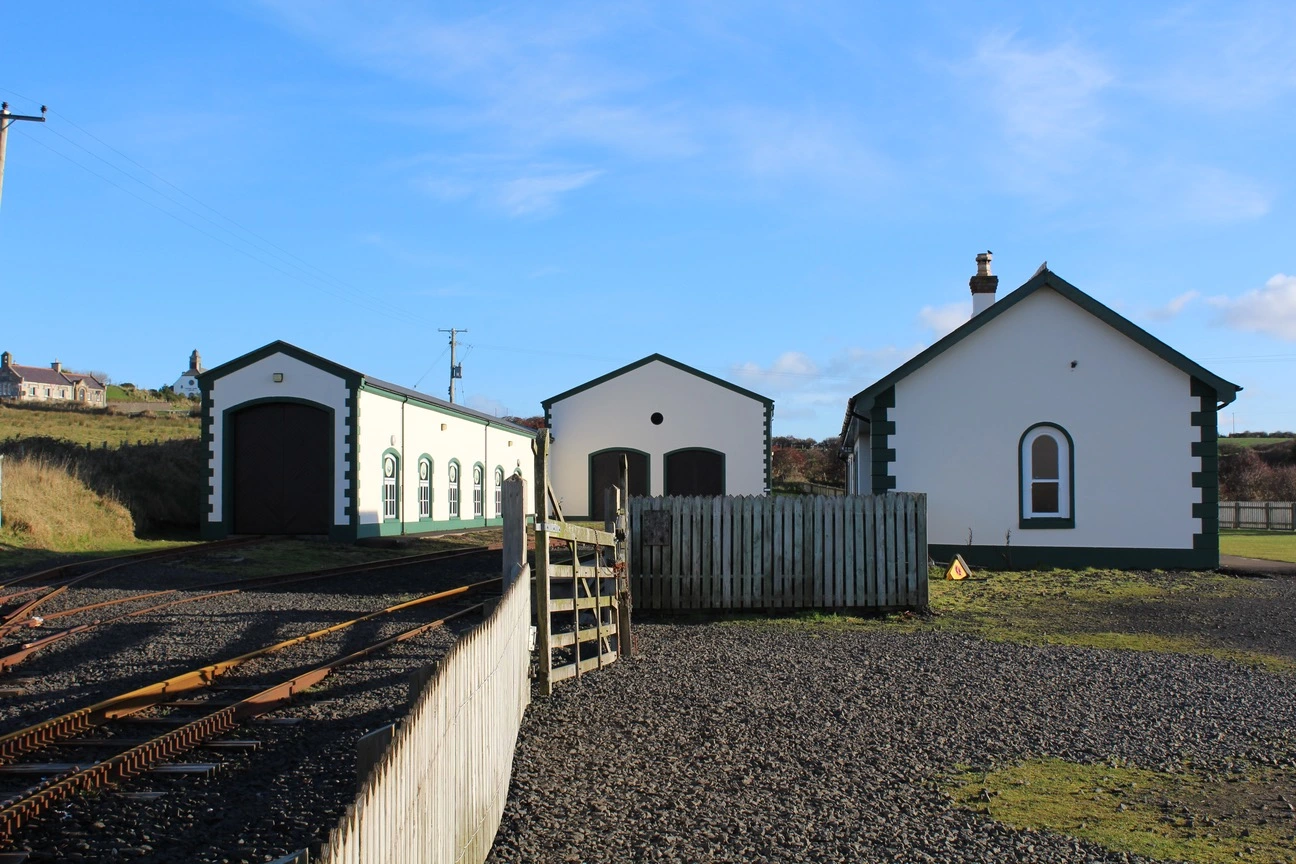
The Route of the Giants Causeway and Bushmills railway
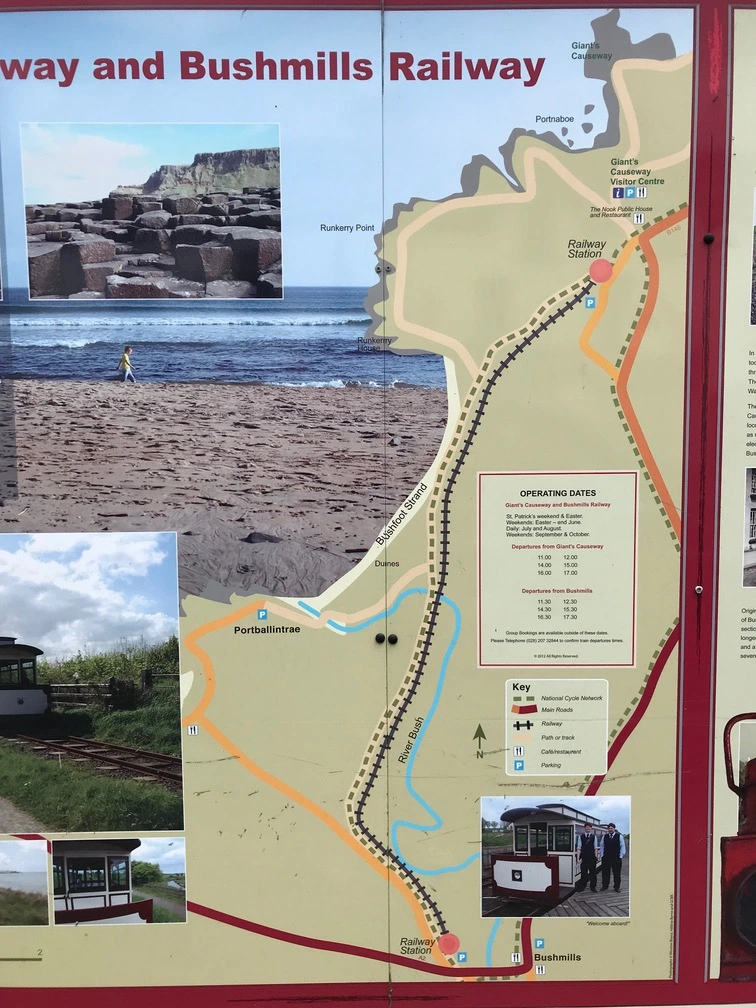
The Giant’s Causeway Bushmills Railway is a heritage railway operating along the historic route from just outside Bushmills Village, taking passengers on a 20 minute journey covering two miles to and from the Giant’s Causeway. The line follows the narrow gauge trackbed of what used to be the Portrush to Giant’s Causeway Tram. The diesel locomotive runs 4 times a day between 11am and 2.30pm on Friday, Saturday and Sunday. Children, in particular, love being on the train.
The route takes passengers along the stunning north antrim Coast, offering breathtaking views of the North Antrim coast, Portballintrea, and the Bushfoot Golf Course. The tram-type carriages, powered by diesel engines, travel along the golden sandy beach, reminiscent of the original Bushmills Hydro Electric Tram and Giant’s Causeway track. As the railway approaches Bushmills, the line turns and runs parallel to Ballaghmore Road, a notable local landmark and key junction point in the area.
Starting from the historic Bushmills Station, the Giant’s Causeway Bushmills Railway offers travelers a unique experience on a narrow gauge track, reminiscent of the traditional Irish narrow gauge railways. As the journey begins, passengers are immediately transported into a world of scenic beauty and historical significance.
The train, with its rolling stock comprising three passenger coaches, chugs along the stunning North Antrim coast, offering panoramic views that captivate the soul. Features such as panoramic windows and guided commentary enhance the visitor experience, making the journey both enjoyable and educational. As the journey progresses, the newly installed bridge carriespassengers over the serene River Bush, adding a touch of modern engineering to this historic route.
One of the journey’s highlights is the magnificent coastal stretch that showcases the region’s natural beauty. The train meanders past an ancient sand dune system, offering glimpses of the pristine landscape that has been shaped by eons of natural processes. As the railway continues its path, crossing Bushfoot Golf Course, allowing them a bird’s eye view of golfers perfecting their swings amidst the lush greens.
The journey is further enriched by the sight of spectacular beach forms at Bushfoot Strand, shaped by the relentless forces of nature. These natural artworks, juxtaposed against the backdrop of the roaring sea, create a mesmerizing visual spectacle.
A significant landmark en route is the Bushmills Terminus, a testament to the railway’s storied past. The lower terminus situated near this point stands as a silent witness to the region’s rich railway heritage.
As the train approaches its final destination, the iconic Causeway hotel and Giant’s Causeway comes into view. This UNESCO World Heritage Site, with its interlocking basalt columns, stands as a testament to nature’s artistic prowess. The sight of these ancient stone pillars, set against the backdrop of the vast ocean, evokes a sense of wonder and reverence.
Before reaching the Giant’s Causeway station, or the upper station, passengers are treated to distant views of the majestic Castle Dunluce Castle, perched precariously on the cliff edge. This ancient fortress, with its tales of battles and intrigue, adds a touch of historical depth to the journey.
The entire railway track, with its three feet width, runs parallel to a cycle track, offering cyclists a chance to race against the train and soak in the region’s beauty at their own pace. The railway is especially popular with groups, including organized tours and families, who appreciate the convenience and shared experience of exploring the Giant’s Causeway area together.
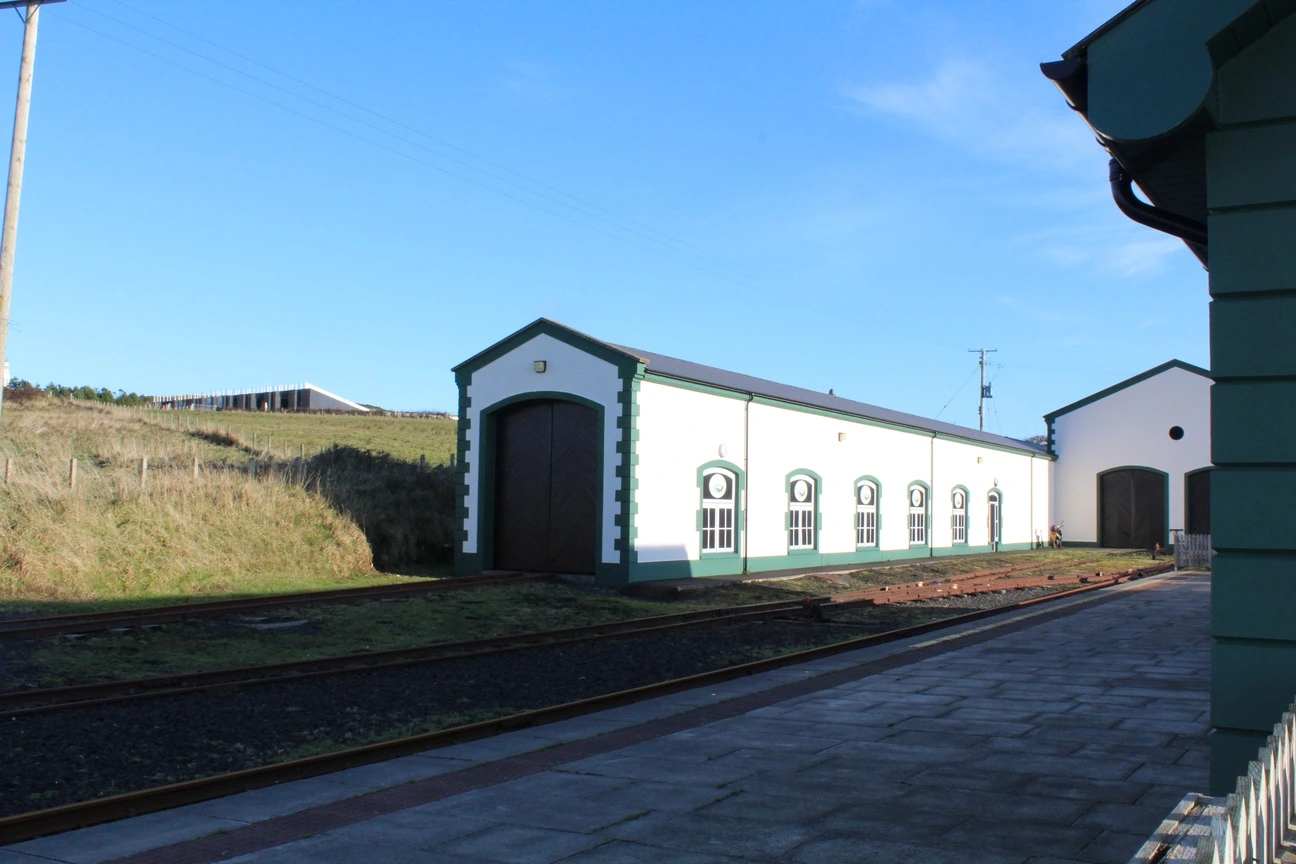
Exploring the Causeway Coast
The Causeway Coast is a breathtaking stretch of Northern Ireland’s coastline, renowned for its dramatic cliffs, sweeping beaches, and picturesque villages. Visitors can immerse themselves in the natural beauty of the area by following the coastal paths that wind along the cliff tops and down to the water’s edge, offering panoramic views of the Irish Sea. The region is a haven for wildlife enthusiasts, with opportunities to spot seabirds, seals, and even dolphins along the shore.
A highlight of any visit is the journey on the Bushmills Railway, which runs along the historic track bed of the former Giant’s Causeway Tramway—the world’s first long electric tramway. This heritage railway offers a unique vantage point to appreciate the stunning landscapes and the rich history of the coast. For those who prefer to explore on foot or by bike, the coastal path provides a scenic route through charming towns like Bushmills, past ancient ruins, and along the rugged coastline. Whether you’re seeking adventure, relaxation, or a glimpse into the past, the Causeway Coast offers a long and memorable experience for every traveler.
How to Get To The Giant’s Causeway and Bushmills Railway
The Bushmills platform, the starting point of this journey, is conveniently located a short walk from Bushmills town centre. It’s situated around 50m from the diamond heading along the Causeway Coast road towards Portrush. The old Bushmills Terminus, now a private residence, stands as a testament to the tramway’s legacy.
Visiting the Bushmills Platform
The Bushmills Platform serves as the gateway to a memorable journey on the Bushmills Railway, a beloved heritage railway that winds its way along the coast to the Giant’s Causeway. Conveniently located near the heart of Bushmills, the platform offers ample parking, making it easy for visitors to start their adventure. Here, you’ll find a welcoming atmosphere with facilities including a café and a gift shop, perfect for picking up refreshments or a memento of your visit.
Boarding the train at the Bushmills Platform, passengers are treated to a nostalgic ride on a steam locomotive, with carriages that evoke the golden age of railway travel. The journey offers spectacular views of the coastline, rolling countryside, and the dramatic backdrop of the Causeway. The railway is operated by dedicated volunteers and runs on a regular schedule throughout the day, ensuring a smooth and enjoyable visitor experience. Special events and activities are held at the platform throughout the year, making each visit unique. Whether you’re a railway enthusiast, a family looking for a fun day out, or a traveler eager to explore the Causeway Coast, the Bushmills Platform is the perfect starting point for your adventure.
Facilities At the Giants Causeway Station

The Bushmills platform offers ample car parking for railway users. Additionally, the station boasts a picnic area and serves refreshments to its visitors. However, it’s worth noting that the station has recently been somewhat neglected, with overgrown hedges and grass. Despite this, the journey remains a unique experience.
Parking
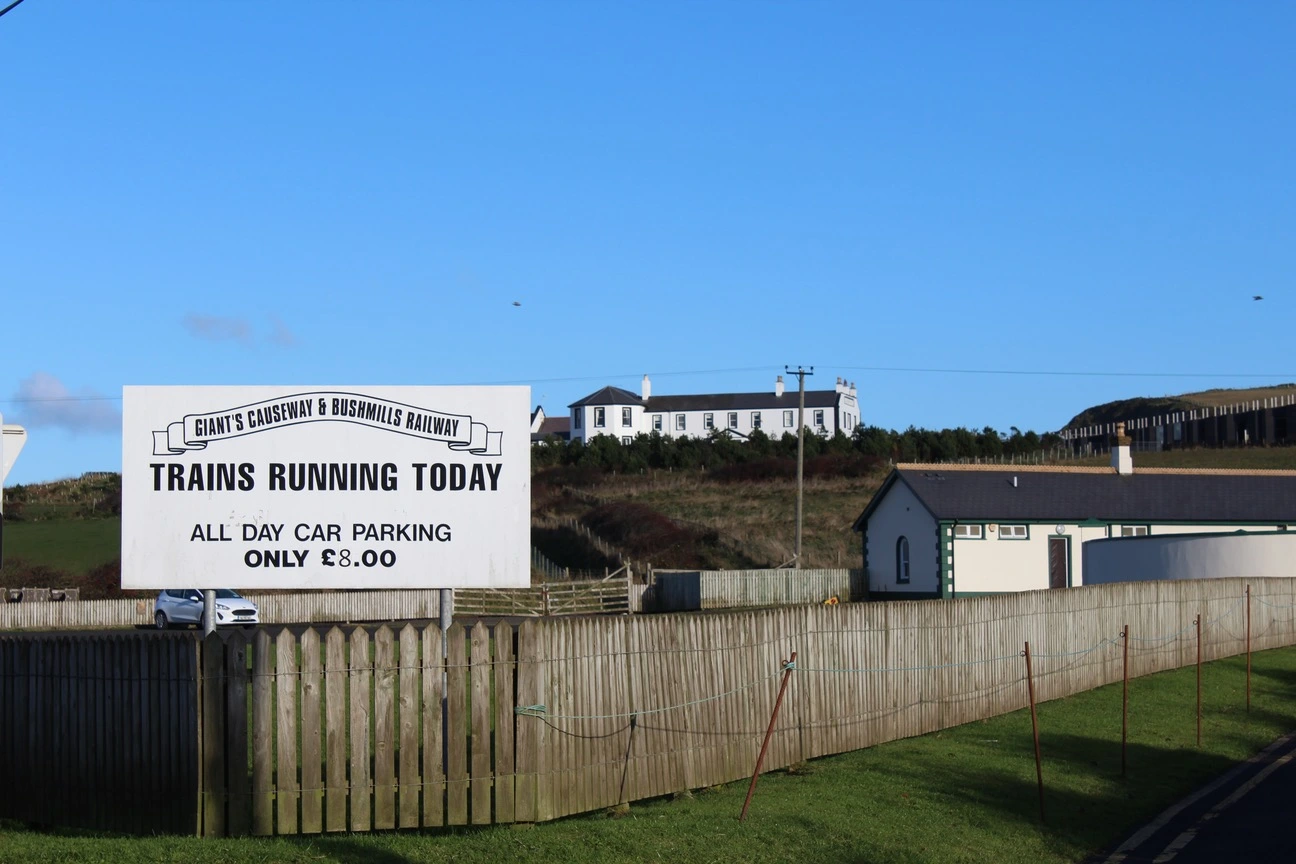
For those driving to the tramway, there’s a free car park available for railway users. The parking address is Giant’s Causeway Station, Runkerry Road, BT57 8SZ.
This is also a great place to car park if you are looking to visit the nearby Giant’s Causeway World Heritage site, as it’s much cheaper and only 50m from the visitor centre along the pathway. If you don’t mind planning your trip around the Giant’s causeway and Bushmills railway timetables then you can park at Bushmills railway station for free, which is just a short distance from Bushmills Town Centre. a historic town in itself.
Cost and Travel Tips
While the exact cost isn’t mentioned in the source, visitors can use their train ticket at the Giant’s Causeway station’s Visitors Centre to avail a discounted entrance fee. As the service is operated by volunteers, it’s advisable to call ahead at (028) 20732844 to confirm the schedule. Also, ensure you arrive at the station at least 10 minutes before the scheduled departure.
The railway often marks the start of its operating season or holds special events at Easter.
Conclusion
The Giant’s Causeway and Bushmills Tramway offers a unique blend of history, scenic beauty, and a touch of adventure. It’s a must-visit for anyone traveling to the Causeway Coast of . Whether you’re a history buff, a nature lover, or simply looking for a unique travel experience, this tramway promises a journey like no other.

